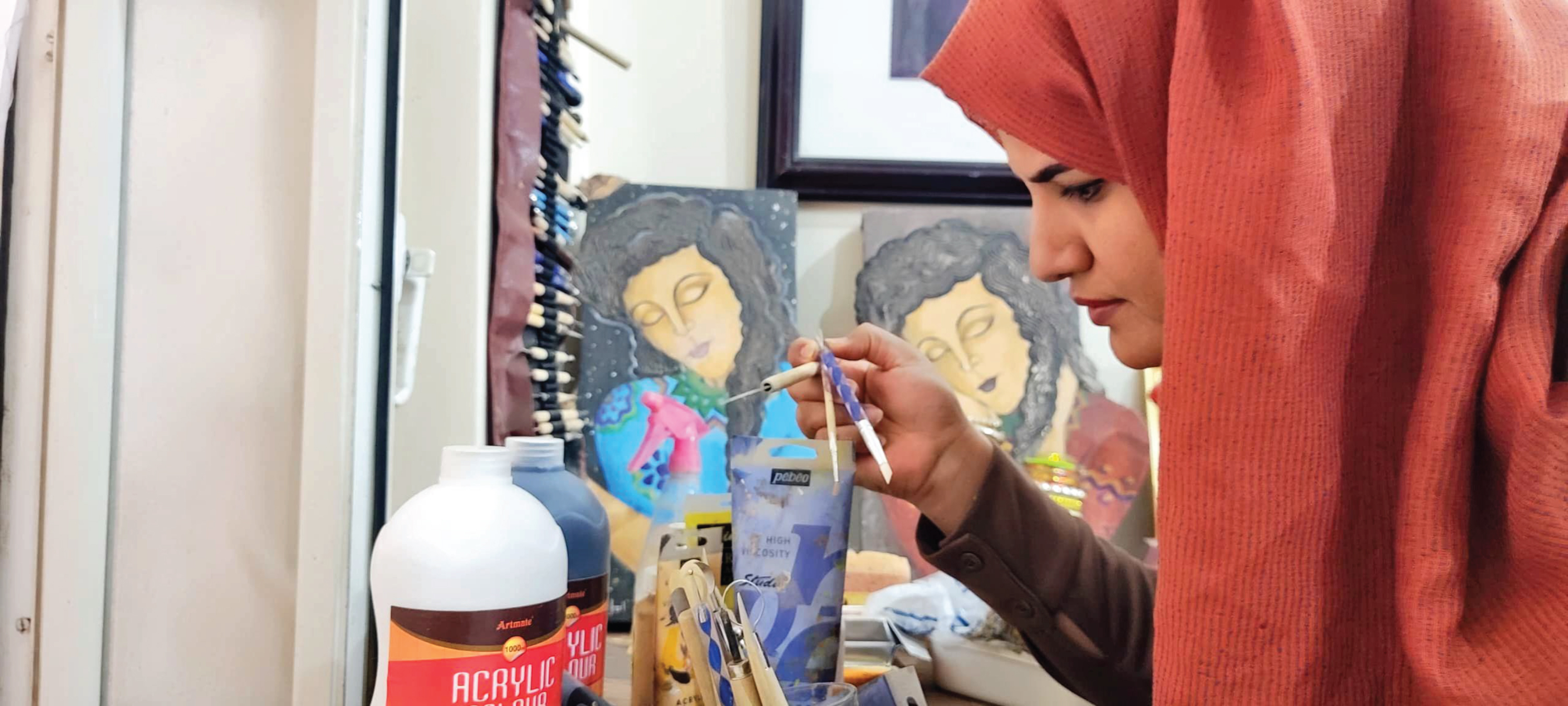In a workshop that feels more like a miniature museum, Amal Fadhel sculpts Yemen’s reality with her hands. The sculptor and university professor transforms clay gathered from mountain soil into three-dimensional figures that reflect women’s stories and human suffering, capturing the hopes and struggles of the Yemeni people amid a war that has dragged on for over a decade.

Sculpting wasn’t her first artistic passion. Born in Lahj, southern Yemen, Amal found her creative outlet in drawing from an early age. Over time, this evolved into clay work, a medium where she discovered her true artistic identity.
Over the past five years, her work has taken a new direction. Since 2020, she has emerged as one of the first clay sculptors in Yemen and the first Yemeni female artist to craft full artistic pieces using local clay.

Giving shape to deep meanings
Her sculpting journey began with a piece titled The Girl of Fingers, depicting a girl in the form of fingers — an expression of an artist’s scattered identity in search of a message or cause.
“I collect clay from our mountains and reshape it at home,” Amal explains. But under her hands, this humble material becomes a platform to reflect harsh realities.
Her first collection, The Shell, portrays the psychological withdrawal and confinement many Yemenis feel under difficult circumstances, along with their failed attempts to break free.
Her sculpture The Oud Player symbolizes the resilience of Yemenis striving to survive and feed their families in today’s crisis.
One prominent piece shows a pregnant woman giving birth. Amal says this sculpture was inspired by journalist Rasha Al-Harazi, who was killed in a car bombing. It now serves as a symbol of Yemen, a country forced to give birth to its children into conflict while yearning for safety and peace.

Art as a message, the slassroom as a platform
Despite the challenges and lack of exhibitions due to limited support, Amal continues to pursue a dual mission: teaching at both public and private universities, where she inspires her students, and working in her studio, which has become a personal museum full of clay sculptures and visual storytelling.
“Peace is the goal,” she says. “Through my work, I hope to deliver a message of peace.”
At the core of her art is a deep belief: “To treat others as humans, to respect their rights, and to accept differences.” For Amal, clay has become a universal language, one that carries Yemen’s pain, sculpts its hopes, and preserves the voice of women and humanity in a country where artists refuse to let the dream of peace be buried under the weight of war.


